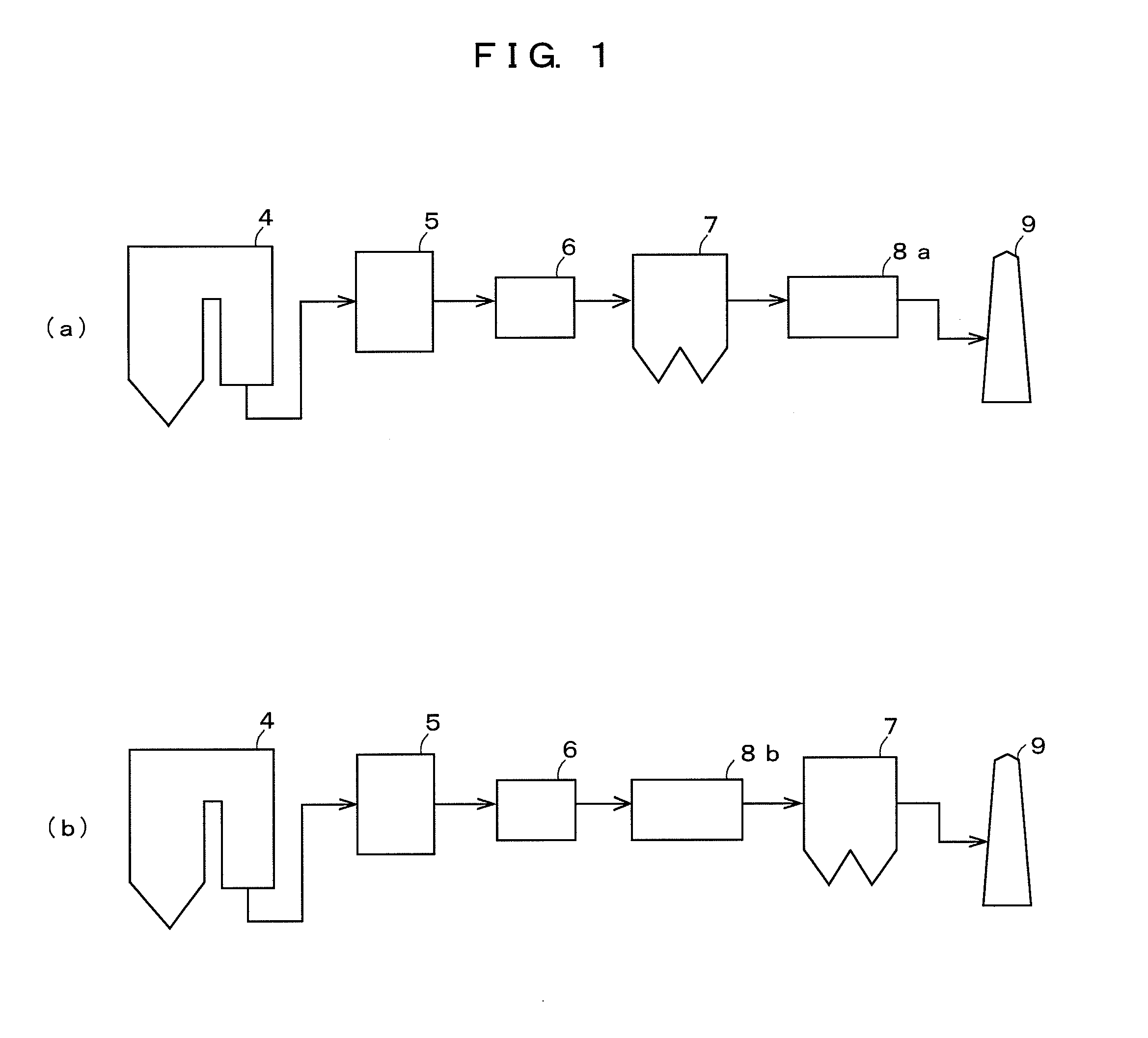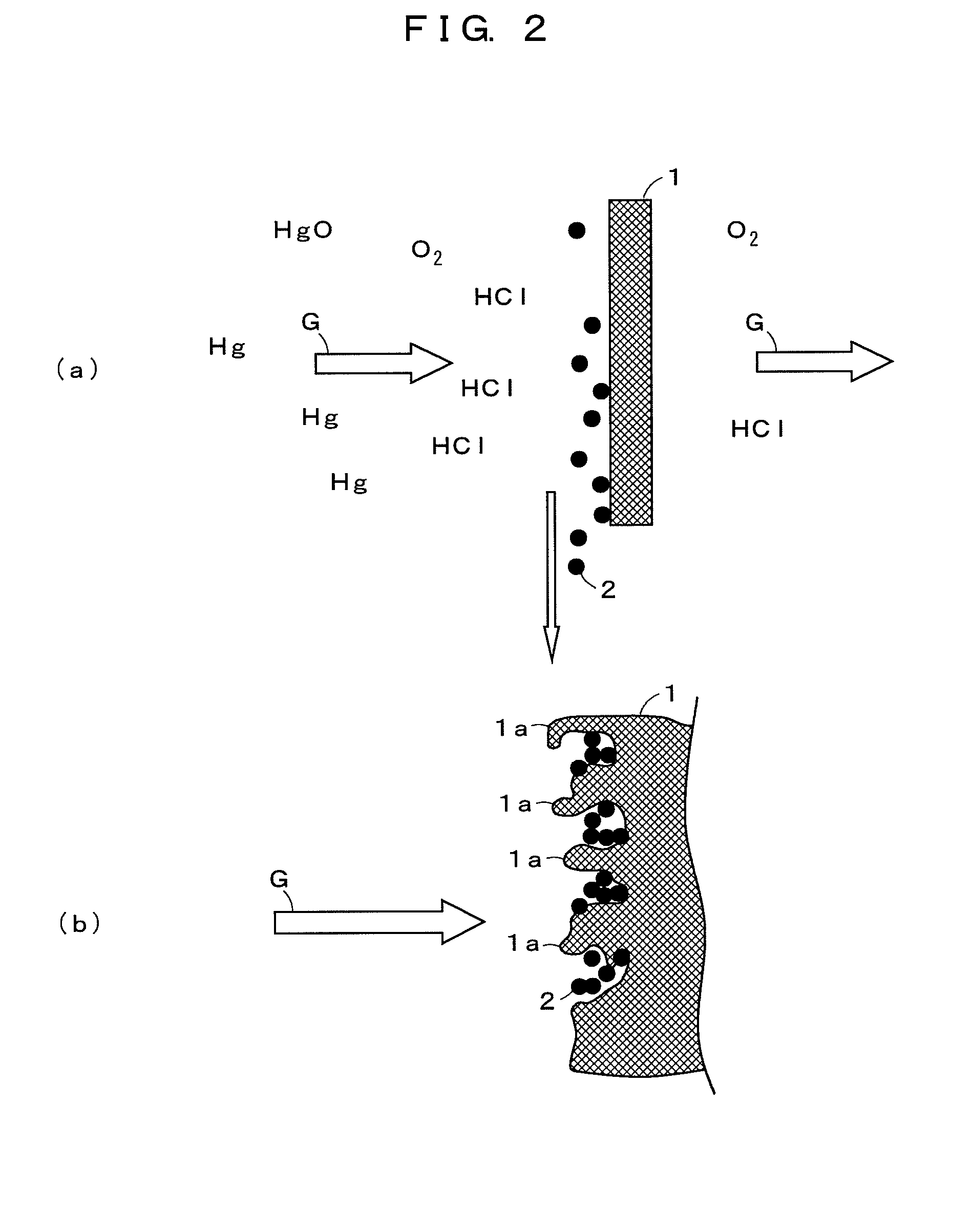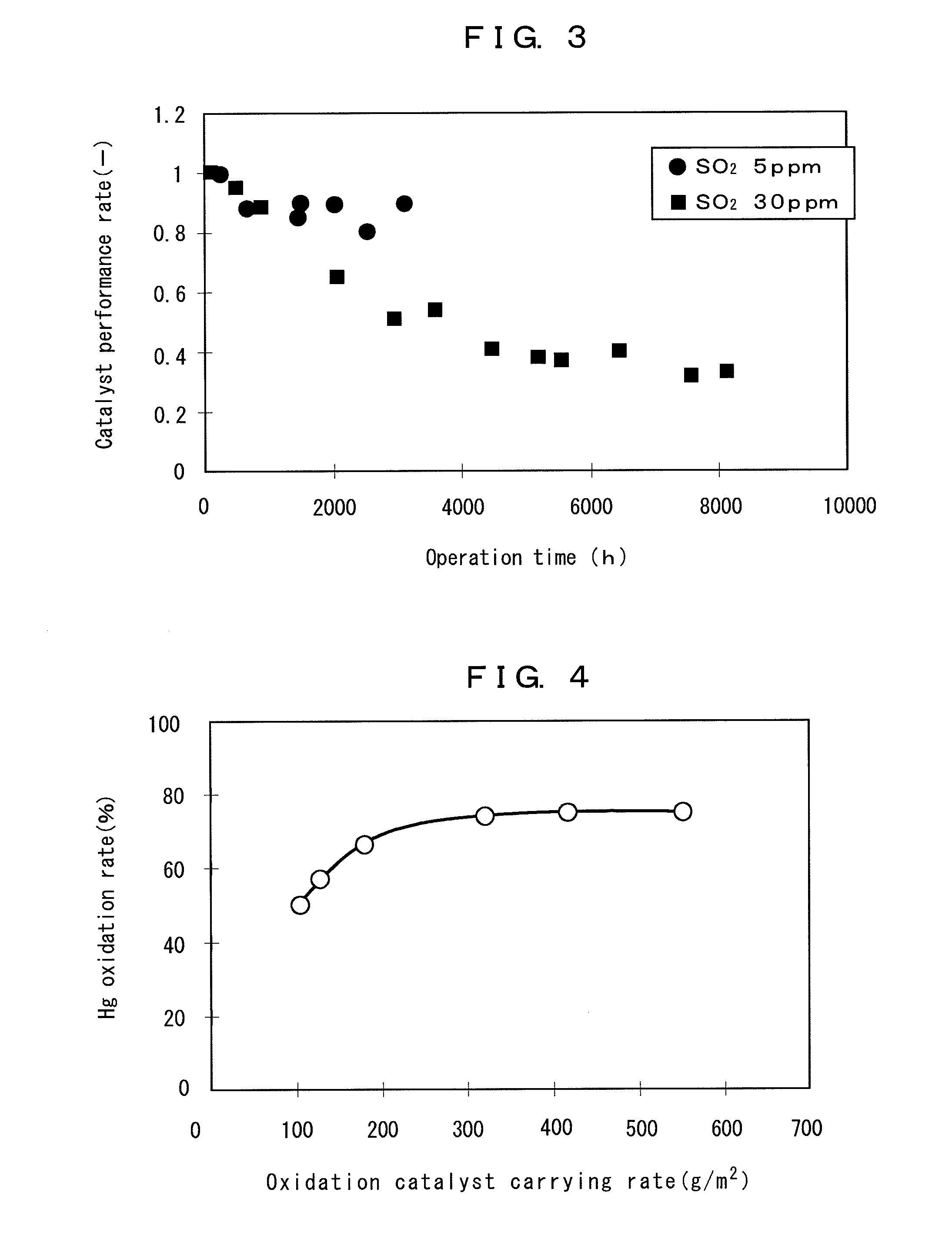Apparatus for removing of trace of toxic substance from exhaust gas and method of operating the same
a technology of toxic substance and exhaust gas, which is applied in the direction of physical/chemical process catalysts, separation processes, metal/metal-oxide/metal-hydroxide catalysts, etc., can solve the problems of not being able to achieve a highly efficient desulfurization and the possibility of exhaustion of metallic mercury kept unoxidized, and achieve the effect of keeping the temperature low
- Summary
- Abstract
- Description
- Claims
- Application Information
AI Technical Summary
Benefits of technology
Problems solved by technology
Method used
Image
Examples
example 1
[0085]As an oxidation catalyst for metallic mercury to be carried on a bag filter, ammonium molybdate ((NH4)6.Mo7O24.4H2O), 10.7 kg, ammonium metavanadate (NH4VO3), 9.9 kg, and oxalic acid, 12.8 kg, were added to titanium oxide powder (TiO2 content: 90 wt % or more, SO4 content: 3 wt % or less), 85 kg, the resultant was in sequence subjected to kneading, granulation, drying, and calcination, with the water content adjusted, and the thus obtained powder was crushed into appropriately-sized particles to obtain a raw material powder for the catalyst. Water was added to the raw material powder to obtain a catalyst slurry. A Tefaire-made filter cloth was submerged into the catalyst slurry, and after catalyst compositions were carried and treated, the filter cloth was dried at 150° C. to obtain a bag filter carrying an oxidation catalyst for metallic mercury. The bag filter carrying the catalyst was in an amount of 350 g / m2.
[0086]Further, as a first composition of the denitration catalyst...
example 2
[0088]As with Example 1, a bag filter carrying an oxidation catalyst for metallic mercury was prepared. Further, as a first composition of the denitration catalyst, titanium oxide powder (TiO2 content: 90 wt % or more, SO4 content: 3 wt % or less), 70 kg, and aluminum compound powder (Al2O3), 0.9 kg, were used. As a second composition, molybdenum trioxide (MoO3), 7 kg, and ammonium metavanadate (NH4VO3), 1.6 kg were added, and alumina / silicate fiber was also added. Thereafter, the resultant was kneaded, with the water content adjusted. The thus obtained catalyst paste was applied on an expanded metal and pressed into a predetermined shape to obtain a plate-shape denitration catalyst. The plate-shape catalyst was calcinated at 500° C.
[0089]A catalyst layer containing the above-described denitration catalyst was disposed on coal-fired boiler test equipment, and an air preheater and a bag filter carrying the oxidation catalyst were disposed in sequence on the downstream side. Further, ...
example 3
[0090]As with Example 1, a bag filter carrying an oxidation catalyst for metallic mercury was prepared. Further, as a first composition of the denitration catalyst, titanium oxide powder (TiO2 content: 90 wt % or more, SO4 content: 3 wt % or less), 70 kg, and aluminum compound powder (Al2O3), 0.9 kg, were used. As a second composition, ammonium metatungstate (NH4)6[H2W12O40], 20 kg, and ammonium metavanadate (NH4VO3), 1.6 kg, were added, and alumina / silicate fiber was also added. Thereafter, the resultant was kneaded, with the water content adjusted. The thus obtained catalyst paste was applied on an expanded metal and pressed into a predetermined shape to obtain a plate-shape denitration catalyst. The plate-shape catalyst was calcinated at 500° C.
[0091]A catalyst layer containing the above-described denitration catalyst was disposed on coal-fired boiler test equipment, and an air preheater and a bag filter carrying the oxidation catalyst were disposed in sequence on the downstream ...
PUM
| Property | Measurement | Unit |
|---|---|---|
| temperature | aaaaa | aaaaa |
| temperature | aaaaa | aaaaa |
| temperature | aaaaa | aaaaa |
Abstract
Description
Claims
Application Information
 Login to View More
Login to View More - R&D
- Intellectual Property
- Life Sciences
- Materials
- Tech Scout
- Unparalleled Data Quality
- Higher Quality Content
- 60% Fewer Hallucinations
Browse by: Latest US Patents, China's latest patents, Technical Efficacy Thesaurus, Application Domain, Technology Topic, Popular Technical Reports.
© 2025 PatSnap. All rights reserved.Legal|Privacy policy|Modern Slavery Act Transparency Statement|Sitemap|About US| Contact US: help@patsnap.com



